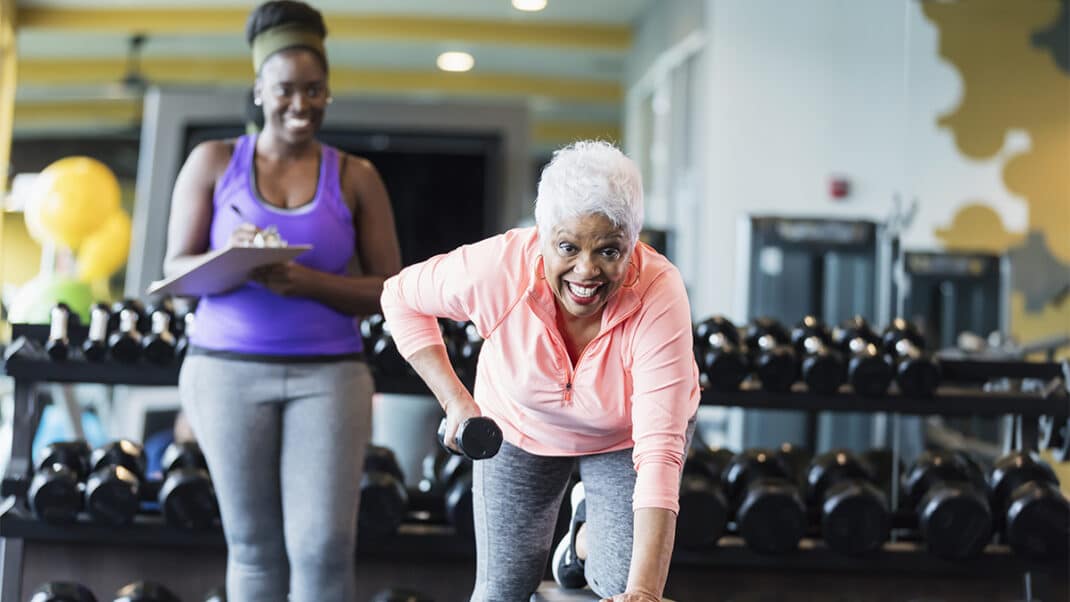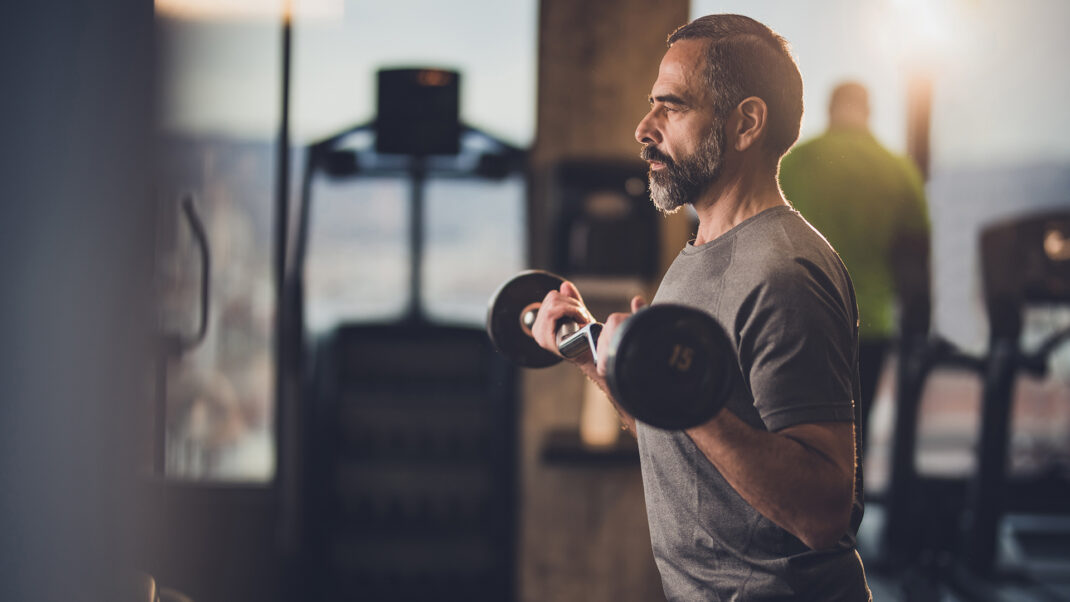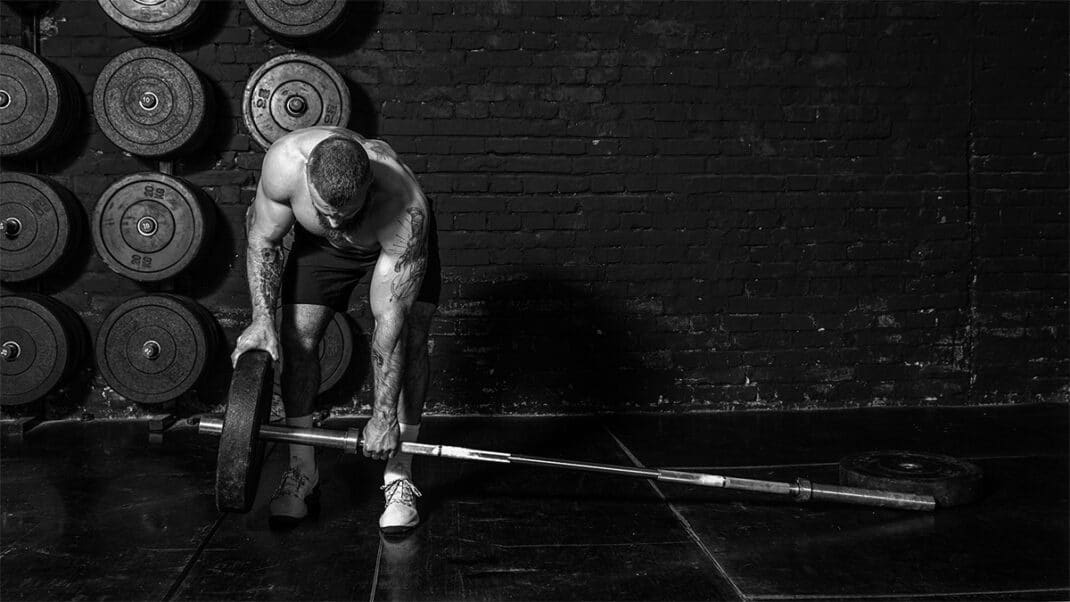Machine-Based and Free-Weight Training for Functional Aging
Proven machine and free-weight interventions.
| Earn 1 CEC - Take Quiz

Muscle strength and dynamic balance are vital at every age, but in older populations, they become even more crucial for maintaining independence and quality of life. Older adults who can perform everyday functional tasks also have a reduced risk of falling and all-cause mortality. Fortunately, research shows that resistance training (RT) can serve as a powerful intervention to preserve musculature, health and more. Here are some guidelines and programming tips for fitness professionals who are excited to help seniors age not just with grace but with strength through free-weight training and machine-based training.
The Hidden Costs of Aging
When combined with a sedentary lifestyle, aging leads to several negative physiological consequences that include decreased muscle mass and motor unit recruitment, reduced muscle quality, the atrophy of fast-twitch muscle fibers, delayed muscle activation, and slower neuromuscular reflexes. Not surprisingly, these effects result in reduced markers of physical fitness, such as decreased muscular endurance, strength, power and dynamic balance. These specific decrements in physical fitness explain why functional task performance—standing up from a chair, gait speed, climbing stairs and performing household activities—tends to be diminished in aging populations.
The good news for fitness professionals and their elderly clientele is that regular resistance training directly opposes all these consequences and, in turn, the risk for falling and the risk for all-cause mortality. In other words, RT can concomitantly improve physical fitness and functional task performance for the elderly lifter while promoting a longer, more active life (Fragala et al. 2019).
Program Design Considerations: Free-Weight Training Versus Machine-Based Training

While variables including volume, frequency, load, tempo, rest and exercise selection all must be considered in RT programming, this column will primarily focus on exercise selection. Specifically, we will consider the effects of free-weight training (FWT) and machine-based training (MBT) on strength, power and functional task performance in elderly populations. FWT and MBT each have unique advantages and disadvantages, and there’s a strong case for including both in your RT programs (Schwanbeck et al. 2020).
For instance, MBT requires much less joint stability because the machine fixes lifters into a plane of motion and essentially provides stability for them. This will allow a novice lifter to master a new motor pattern (e.g., learning how to squat) or an experienced lifter to isolate one particular muscle group (e.g., pectoralis major on a chest fly).
In contrast, the greater stability and balance requirements of FWT may lead to greater motor unit recruitment, muscular activation and synchronization (i.e., muscle groups firing together) (Schwanbeck et al. 2020).
In the FWT versus MBT debate, it is often hypothesized that the former will transfer better to functional task performance because the motor control demand is much greater when using implements such as barbells, dumbbells and kettlebells. Also, some FWT exercises more closely resemble activities of daily living (ADLs), which means they are more specific to the demands of functional task performance (Balachandran et al. 2016; Schott, Johnen & Holfelder 2019).
See also: Free Weights Versus Machines: Which Is Better?
A Focus on Muscular Strength
To assess the effects of free-weight training and machine-based training on muscular strength, Schott, Johnen & Holfelder recruited 32 high-functioning, independently living older adults (ages 60–86) and randomly assigned them to FWT or MBT. Both groups trained 2 days a week for 26 weeks, and every training variable was matched between interventions except for exercise modality.
Muscular Strength
Results indicated that both groups significantly increased their muscular strength, as indicated by improved 10-repetition maximum for every exercise performed during the 26-week program.
Lower Body and Triceps
Considering percent increases, FWT was more effective than MBT for lower-body strength (+113% versus +44%) and triceps strength (+89% versus +28.3%), which has important practical implications for improving performance of ADLs. For example, an individual with stronger legs may ascend a flight of stairs at a faster pace, while those with stronger triceps may lift their body out of a bathtub with greater ease.
Summary and Limitations
Based on their findings, the authors speculated that FWT may be the better choice for helping elderly lifters improve their overall performance and mobility, although their study did not directly measure functional task performance (e.g., using the sit-to-stand test). To address this specific limitation, we will now highlight findings of a study by Balachandran et al. (2016).
Adding Functional Tasks and ADLs
In this study, 29 independently living older adults (ages 65–90) were randomly assigned to 12 weeks of standing-cable training (i.e., FWT) or seated-machine training (i.e., MBT). As with Schott, Johnen & Holfelder, both groups trained 2 days a week, and every training variable was matched between them except for exercise selection.
Strength and Rotational Power
Both groups showed similar significant increases in lower-body strength (+23%–24%) and rotational power (+7%–10%). Also, both groups significantly increased their upper-body strength, though the seated-machine subjects made significantly greater changes than the standing-cable subjects (+24% versus +10%).
Functional Task Performance
Both groups improved their scores on a physical performance battery, but slightly greater improvements were achieved by subjects in the standing-cable group during a chair-stand task (+24% versus +13%).
Activities of Daily Living
Although both groups similarly improved overall ADL performance (+5%), subjects in the standing-cable group outperformed those in the seated-machine group during a pan-carry task (+23% versus +11%).
Summary
The authors concluded that both training styles were beneficial for increasing muscular strength and functional performance, but the machine training was better for the former, while free-weight training was better for the latter.
See also: Degrees of Functional Abilities, Demystified
Key Takeaways on Machine-Based and Free-Weight Training

When we combine the key points from these two studies, it becomes clear that machine-based training and free-weight training have their merits when it comes to program design for older clients. To summarize:
- FWT and MBT both resulted in significant increases in muscular strength, rotational power, physical performance tests and activities of daily living.
- MBT proved to be better for improving upper-body strength, as evidenced by the 10-RM and the pan-carry.
- FWT was shown to do more for lower-body strength, as shown in 10-RM improvements and the chair-stand activity.
Of note, there are other factors that will play a role in the fitness professional’s program design, such as the lifters’ comfort level with different exercises, as well as their access to a gym and/or exercise equipment.
Taking a Hybrid Approach
Here are three examples of how you can use both MBT and FWT in your approach.
1. Progress novice lifters from machine-based to free-weight training.
If elderly clients have never performed RT before, or have not done so for several years, it is essential to improve their motor control and confidence in a safe environment. Machines provide stability and control that make it easier for new lifters to execute movements safely and successfully. The machine-training program from Schott, Johnen & Holfelder (page 15) and seated-machine program from Balachandran et al. (left) are great options for the novice lifter to use before progressing to FWT. Warmup and cooldown periods can be used for teaching proper form for more complicated exercises such as squatting, hinging and pressing.
2. Choose exercises with elements of machine-based and free-weight training.
It’s easy to conceptualize differences between some FWT and MBT exercises, such as a barbell squat and seated leg press. However, there are also many training modalities that provide the distinct advantages of both modalities, such as squats on a Smith machine or a hack-squat machine. The degree of transferability from these exercises to functional task performance is likely high because lifters will adopt an upright posture and work through a closed kinetic chain when performing their repetitions. Because the machine provides stability for them, their form will likely be better, heavier loads can be used, and transmission of force may be more efficient.
Similarly, it can be argued that standing-cable exercises are a hybrid of FWT and MBT and could thereby increase the transferability of upper-body exercises such as pushes and pulls. By performing these lifts, clients can strengthen their upper-body musculature while training balance and stability in their lower-body musculature.
3. Perform free-weight training and machine-based training during the same session.
Once older clients are proficient with FWT and MBT movements, fitness professionals can program both into a single bout of training. This will allow the lifter to take advantage of using heavier loads during various MBT movements (e.g., seated chest press) while gaining the functional benefits of certain FWT exercises (e.g., step-up with dumbbells).
Both MBT and FWT are effective at helping older clients stand strong and stay mobile for their next trip around the sun. Fitness professionals who embrace the opportunity to create customized programming for older adults may find that they, too, benefit from flexing their creative muscles to help others live their best life.
See also: Resistance Training for Older Adults: New NSCA Position Stand
Sample Program: 5 Total-Body Exercises Per Session
Training variables:
- 2 days/week for 26 weeks
- 3 sets of 10–12 reps
- 70%–80% of 10-RM
- 2-second eccentric; 2-second concentric tempo
- 2 minutes of rest between sets
Exercises performed by the free-weight (barbell) group:
- squat
- bench press
- bent-over row
- lying triceps press
- biceps curls
Exercises performed by the machine-training group:
- leg press
- chest press
- seated row
- triceps cable extension
- biceps cable curls
Source: Schott, Johnen & Holfelder 2019.
Sample Program: 10 Total-Body Exercises Per Session
Training variables:
- 2 days/week for 12 weeks
- 10 total-body exercises
- 3 sets of 12 reps with an RPE of 6–8 (1–10 scale)
- tempo: 2-second eccentric, 2-second concentric
- rest: 1–2 minutes between sets
Exercises performed by the standing-cable group:
- standing chest press
- standing row
- standing shoulder press
- standing biceps curls
- standing triceps pushdowns
- standing trunk rotations
- box squats
- standing adductor
- standing abductor
- standing calf raise
Exercises performed by the seated-machine group:
- seated chest press
- seated row
- seated shoulder press
- seated preacher curls
- standing arm extension
- lying crunches
- leg press
- seated adductor
- seated abductor
- seated dorsiflexion
Source: Balachandran et al. 2016.
Sample Sessions: FWT and MBT Supersets
Here are two examples of a total-body lifting session where FWT and MBT exercises are performed as supersets. The exercises that follow have been adapted from those in Balachandran et al. (2016) and Schott, Johnen & Holfelder (2019).
Total-Body Session I
- box squat + standing cable row
- leg press + seated chest press
- standing cable trunk rotation + barbell biceps curl
- seated machine dorsiflexion + standing cable triceps pushdown
Total-Body Session II
- Smith machine squat + rotational medicine ball throw
- hip thrust + farmer carry
- barbell calf raise + triceps (machine) dip
- dumbbell bench press + standing cable row
References
Balachandran, A., et al. 2016. Functional strength training: Seated machine vs standing cable training to improve physical function in elderly. Experimental Gerontology, 82, 131–38.
Fragala, M.S., et al. 2019. Resistance training for older adults: Position statement from the National Strength and Conditioning Association. Journal of Strength and Conditioning Research, 33 (8), 2019–52.
Schott, N., Johnen, B., & Holfelder, B. 2019. Effects of free weights and machine training on muscular strength in high-functioning older adults. Experimental Gerontology, 122, 15–24.
Schwanbeck, S.R., et al. 2020. Effects of training with free weights versus machines on muscle mass, strength, free testosterone, and free cortisol levels. Journal of Strength and Conditioning Research, 34 (7), 1851–59.
Zachary Mang, PhD
Zachary Mang, PhD, is a postdoctoral research associate for the wellness program at the Los Alamos National Lab where he specializes in strength and conditioning for structural firefighters. His research interests include resistance training for hypertrophy, oxidative adaptations to resistance training, and the use of resistance training as a frontline defense to prevent chronic disease.






